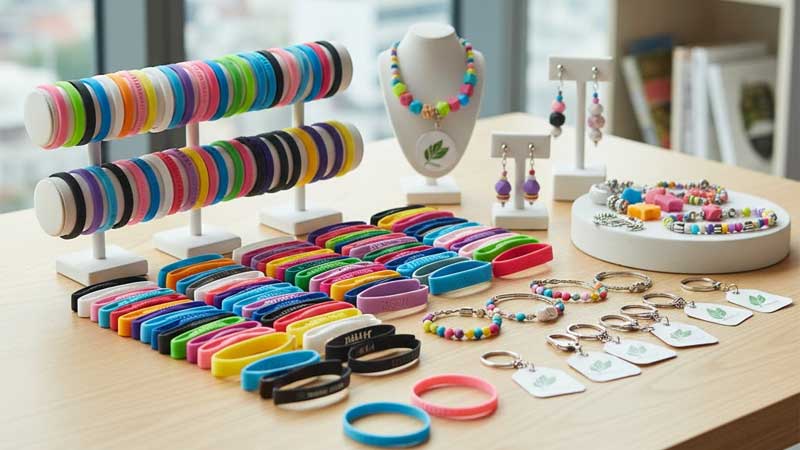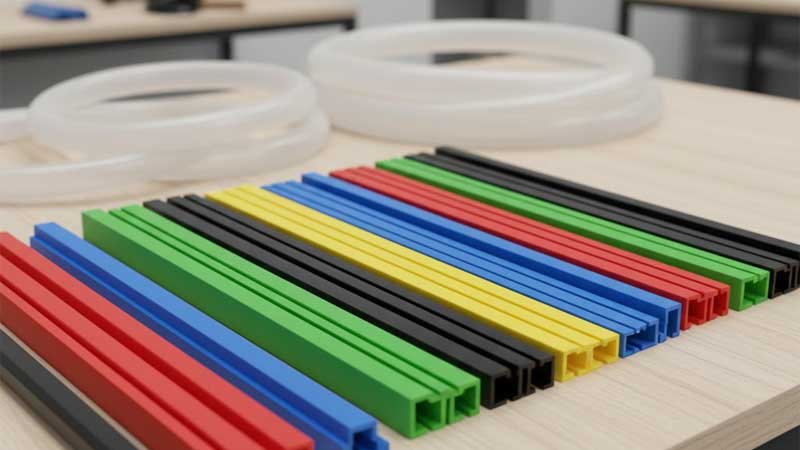The shelf life of silicone products is a common concern. Knowing how long it stays effective helps manage inventory and ensure quality. This article gives a clear overview of silicone shelf life.

Are There Standards to Reference for Silicone Shelf Life?
Various standards provide guidance on silicone shelf life, though specific requirements depend on the application.
BSI SO2230 classifies silicone in Group C, indicating the lowest sensitivity to aging. It recommends an initial shelf life of 10 years. After this period, testing is required to determine if the material is still suitable, with subsequent retests every 5 years.
BS 4F 68 (aviation standard) classifies silicone in Group X. It does not specify a definite shelf life but serves as a reference for inventory management and delivery records.
Summary Table: Silicone Shelf Life Reference
| Standard | Group | Aging Sensitivity | Recommended Initial Shelf Life | Subsequent Testing Interval |
| BSI SO2230 | Group C | Lowest | 10 years | Retest every 5 years |
| BS 4F 68 | Group X | Not specified | Not specified | Test as needed |
How Do Silicone Materials and Formulations Affect Shelf Life?
The longevity of silicone closely depends on its material type, formulation, and additives. These factors play a key role in determining long-term performance.
- Silicone Type: LSR (Liquid Silicone Rubber), HTV (High-Temperature Vulcanized Silicone), and RTV (Room-Temperature Vulcanized Silicone) differ in thermal stability and chemical resistance.
- Additives and Fillers: Pigments, antioxidants, plasticizers, and other additives influence aging rates. Certain additives enhance oxidation and heat resistance, slowing down material degradation. In contrast, inappropriate pigments or plasticizers can accelerate physical deterioration, causing reduced elasticity or a sticky surface.
- Crosslink Density and Formulation Quality: Silicone with balanced formulations and appropriate crosslinking tends to be more durable, maintaining elasticity and physical properties over time. Insufficient crosslinking may lead to hardening or brittleness during storage or use, while excessive crosslinking can reduce flexibility. A well-designed formulation balances durability and elasticity, effectively extending the product’s service life.

How Do Storage Conditions Affect Silicone Shelf Life?
The storage environment has a direct and significant impact on silicone’s shelf life. Factors like temperature, humidity, and light exposure can alter its physical properties and chemical stability, affecting long-term performance.
The table below summarizes how different storage conditions influence silicone and provides practical recommendations to extend product life and maintain stable performance.
| Storage Condition | Impact | Recommendation |
| High Temperature (>40°C) | Accelerates aging | Store in cooler, shaded areas |
| High Humidity | Surface stickiness, possible mold | Use dry, moisture-proof packaging |
| Direct UV Exposure | Color changes, surface aging | Avoid direct sunlight |
| Refrigeration or Low Temperature | May affect softness | Keep in a cool, moderate environment |
What Is the Relationship Between Shelf Life and Service Life?
Silicone’s shelf life and service life are closely related, yet they refer to different concepts.
Shelf life indicates the period during which a product can maintain its original properties under ideal storage conditions, essentially the safe storage time before actual use.
Service life refers to how long a product can perform as designed in real operating conditions, influenced by temperature, mechanical stress, chemical exposure, and other factors.
Key factors affecting service life include:
- Temperature: High heat accelerates chemical aging and changes in the crosslinked structure, reducing elasticity and strength. As a rule of thumb, every 10°C increase can roughly halve the service life.
- Mechanical Stress: Continuous stretching, compression, or friction can lower elasticity, cause permanent deformation, or even lead to cracks.
- Chemical Environment: Contact with acids, bases, oils, or cleaning agents may speed up surface aging or internal degradation.
In general, silicone is considered near the end of its service life when physical properties decline to about 50% of their original values.
Specific applications may allow different thresholds. For example, in low-stress or non-critical sealing situations, silicone may still be usable at 30%–40% property reduction, while high-temperature seals or safety-critical components usually require minimal performance loss.
Example: A silicone seal used continuously at 50°C may last about 6 years. If the operating temperature rises to 60°C, chemical reactions accelerate, and the estimated service life roughly halves to 3 years. If the seal only operates 8 hours per day instead of continuously, the actual service life can extend further.

How to Determine If Silicone Has Aged?
Silicone gradually ages during storage or use, and its performance changes over time, depending on environmental conditions and load. Identifying aging is crucial to ensure the material still meets performance requirements.
Visual Changes
- Color changes or fading: Prolonged exposure to UV light or high temperatures can cause yellowing, darkening, or fading on the silicone surface.
- Surface cracks or shrinkage: Fine cracks, microfissures, or local shrinkage may indicate drying, increased crosslinking, or reduced elasticity.
- Tacky or powdery surface: Aged silicone may feel sticky or show powdering, especially if additives are uneven or storage conditions are humid.
Physical Performance Testing
- Hardness changes: Measure with a Shore A or B durometer. Aging silicone often shows a rise or rapid drop in hardness.
- Tensile and breaking properties: Perform tensile tests to check maximum elongation and breaking strength. Aged materials typically show reduced elongation.
- Compression set: After compression under a specific load, aged silicone recovers less, with higher permanent deformation.
Chemical Stability and Heat Resistance Tests
- Thermal aging tests: Expose samples to temperatures above normal usage to accelerate aging, then observe changes in physical properties to estimate remaining life.
- Chemical and solvent resistance: Immerse silicone in potential chemicals it may contact, checking for swelling, dissolution, or surface damage.
Sensory and Functional Checks
- Touch and flexibility: Aged silicone often loses softness and elasticity, feeling harder or brittle.
- Fit and usability: If seals become hard to install, fail to seal properly, or do not conform to shape, the material may have degraded.
Regular Inspection Recommendations
- For stock exceeding the recommended shelf life or long-stored silicone products, perform small-batch physical testing.
- For critical seals or high-temperature applications, evaluate performance every 3–5 years to ensure compliance with original design specifications.

Conclusion
Silicone is one of the most stable elastomers available, and under proper storage conditions, it can maintain its performance for many years—sometimes even decades. In practice, most silicone products stored in cool, dry, and shaded environments remain in excellent condition even after the initial 10-year shelf life period. Regular testing and proper handling further extend their usability, making silicone an ideal material for long-term applications across various industries.
If you’re looking for a reliable silicone manufacturer with deep expertise in formulation design, molding, and quality control, Ruiyang Silicone is your trusted partner.
With over 10 years of experience in silicone material research and precision manufacturing, we provide:
- Customized silicone solutions tailored to your industry needs
- Strict quality inspection and compliance with international standards
- Advanced molding technologies for consistent performance
- Professional engineering support and fast delivery
Contact us today to discuss your project. Let our technical team help you design and produce durable, high-quality silicone products that stand the test of time.